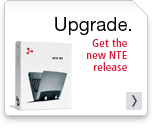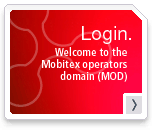|
Investment strategy
Mobitex has by far the lowest infrastructure costs per user in the wireless industry. Investing in a wireless data network is nonetheless a major decision that must be considered carefully. This section describes key factors that shape a successful investment strategy.
Licensing
In most countries, separate frequency and operator licenses are required. A frequency license allows radio equipment to be used within a certain frequency range, which for Mobitex may be 400 Mhz, 800 MHz or 900 MHz. Available frequencies may vary, but in countries with GSM networks the 900 MHz band is normally allocated for GSM. Because radio spectrum is a scarce resource, frequency licenses are generally expensive. Mobitex, however, is extremely spectrum-efficient and requires only a minimum of 20 duplex channels of 12.5 kHz each, hence 250 kHz for the up- and downlinks, respectively.
Operator licenses vary depending on how the network will be used. A private Mobitex operator uses the network for an internal application, such as dispatching and vehicle location for transport companies, or automatic meter reading of a certain utility. In cases like these, the operator and the user are one and the same, and usage is not subject to tariff-based charging. A public operator, on the other hand, sells airtime and/or applications to the general public according to established tariffs, which may be subject to government regulation.
Identify applications
It is essential to identify which applications are needed for the wireless data communications. There may be potential for a wide variety of applications, but achieving a return on a network investment requires quickly feeding the network with real users who generate traffic and revenues.
In many cases, a single application for a large number of users can provide sufficient justification for a network investment. First, however, all requirements must be identified: What data is to be transferred? How frequently? Is data generated automatically or manually? What type of terminal would be appropriate?
Business Case
In order to estimate the costs for obtaining licenses, building the network, taking it into service and marketing the services, a business case must be established. These costs should be balanced against projected revenues and/or savings.
Wireless data is a growing market, but growth is not automatic. Users will not flock to the network simply because it is there. Many business cases tend to underestimate the costs and overestimate the projected revenues.
Identify suppliers
Potential hardware and software suppliers must be identified. These suppliers often become the network operator's most important partners and are a key success factor since most end customers want end-to-end solutions and turnkey applications that can only be provided by partnering with hardware and software suppliers and systems integrators. Mobitex Technology can assist in this process by searching the vast number of suppliers active in different Mobitex markets around the world.
Marketing plan
Compiling as much data as possible about the potential market will significantly increase the chances for success and a quick return on investment. The marketing plan should be based on facts and detailed information on specific user groups. The data obtained should be used to revise and refine the business case. It is also important to realize that sales cycles, particularly for vertical applications for specific sectors, may be lengthy and that it may be advisable to find partners as well as approach potential customers even before an investment decision has been made.
|



